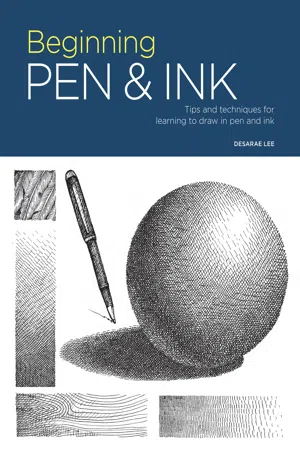
eBook - ePub
Portfolio: Beginning Pen & Ink
Tips and techniques for learning to draw in pen and ink
- 128 pages
- English
- ePUB (mobile friendly)
- Available on iOS & Android
eBook - ePub
About this book
Portfolio: Beginning Pen & Ink will teach you everything you need to know about the fundamentals of drawing with pen and ink.
From the beloved and best-selling Portfolio art series by Walter Foster Publishing comes Portfolio: Beginning Pen & Ink, a book that invites you to explore this classic art medium in new and refreshing ways. This comprehensive guide is packed with valuable resources for artists of all skill levels, starting with the basics and ending with intricate, original step-by-step projects that are sure to impress—and inspire.
Portfolio: Beginning Pen & Ink introduces drawing basics, including stippling, hatching, and crosshatching; how to master the fundamentals of mark-making and line work; and helpful exercises for contour drawing, gesture drawing, perspective, and more. Chapters on value, tone, mood, light and shadow, and texture follow, ensuring that artists gain the drawing knowledge they need before working on the step-by-step projects featured in the book. Artists can even learn to add color to their black-and-white art using watercolor for a fresh, modern take on an age-old art form.
Whether you're a new artist looking to try a celebrated art technique, a pen-and-ink enthusiast, a mixed-media master, or a graphite-pencil fan looking to branch out to new mediums, Portfolio: Beginning Pen & Ink will teach you everything you need to know.
The Portfolio series covers essential art techniques, core concepts, and media with an approach and format that’s perfect for aspiring, beginning, and intermediate artists.
Also available from the series: Beginning Acrylic, Beginning Drawing, Beginning Watercolor, Beginning Pastel, Beginning Colored Pencil, Beginning Color Mixing, Expressive Painting, Beginning Color Mixing, and Beginning Composition.
From the beloved and best-selling Portfolio art series by Walter Foster Publishing comes Portfolio: Beginning Pen & Ink, a book that invites you to explore this classic art medium in new and refreshing ways. This comprehensive guide is packed with valuable resources for artists of all skill levels, starting with the basics and ending with intricate, original step-by-step projects that are sure to impress—and inspire.
Portfolio: Beginning Pen & Ink introduces drawing basics, including stippling, hatching, and crosshatching; how to master the fundamentals of mark-making and line work; and helpful exercises for contour drawing, gesture drawing, perspective, and more. Chapters on value, tone, mood, light and shadow, and texture follow, ensuring that artists gain the drawing knowledge they need before working on the step-by-step projects featured in the book. Artists can even learn to add color to their black-and-white art using watercolor for a fresh, modern take on an age-old art form.
Whether you're a new artist looking to try a celebrated art technique, a pen-and-ink enthusiast, a mixed-media master, or a graphite-pencil fan looking to branch out to new mediums, Portfolio: Beginning Pen & Ink will teach you everything you need to know.
The Portfolio series covers essential art techniques, core concepts, and media with an approach and format that’s perfect for aspiring, beginning, and intermediate artists.
Also available from the series: Beginning Acrylic, Beginning Drawing, Beginning Watercolor, Beginning Pastel, Beginning Colored Pencil, Beginning Color Mixing, Expressive Painting, Beginning Color Mixing, and Beginning Composition.
Frequently asked questions
Yes, you can cancel anytime from the Subscription tab in your account settings on the Perlego website. Your subscription will stay active until the end of your current billing period. Learn how to cancel your subscription.
At the moment all of our mobile-responsive ePub books are available to download via the app. Most of our PDFs are also available to download and we're working on making the final remaining ones downloadable now. Learn more here.
Perlego offers two plans: Essential and Complete
- Essential is ideal for learners and professionals who enjoy exploring a wide range of subjects. Access the Essential Library with 800,000+ trusted titles and best-sellers across business, personal growth, and the humanities. Includes unlimited reading time and Standard Read Aloud voice.
- Complete: Perfect for advanced learners and researchers needing full, unrestricted access. Unlock 1.4M+ books across hundreds of subjects, including academic and specialized titles. The Complete Plan also includes advanced features like Premium Read Aloud and Research Assistant.
We are an online textbook subscription service, where you can get access to an entire online library for less than the price of a single book per month. With over 1 million books across 1000+ topics, we’ve got you covered! Learn more here.
Look out for the read-aloud symbol on your next book to see if you can listen to it. The read-aloud tool reads text aloud for you, highlighting the text as it is being read. You can pause it, speed it up and slow it down. Learn more here.
Yes! You can use the Perlego app on both iOS or Android devices to read anytime, anywhere — even offline. Perfect for commutes or when you’re on the go.
Please note we cannot support devices running on iOS 13 and Android 7 or earlier. Learn more about using the app.
Please note we cannot support devices running on iOS 13 and Android 7 or earlier. Learn more about using the app.
Yes, you can access Portfolio: Beginning Pen & Ink by Desarae Lee in PDF and/or ePUB format, as well as other popular books in Art & Art General. We have over one million books available in our catalogue for you to explore.
Information
BASIC
Techniques

Line Work
The first step to using pen and ink is learning how to control and communicate with line. Let’s go over a few types of lines to give you some ideas.
STRAIGHT LINES
A straight line may seem fairly static; it goes in only one direction. But flip that line onto a diagonal and give it some friends, and you’ve got a party!
When using straight lines, keep in mind that horizontal lines communicate rest, peace, relaxation, and stagnation, while vertical lines imply strength, dignity, and power. Diagonal lines imply movement, dynamism, and activity.

CURVED LINES
What if we change that taut, straight line into a loose, curvy one? Curved lines bring an organic touch to a drawing. Shallow, gentle curves communicate comfort, ease, and sensuality. Steep, tight curves may suggest confusion, intense movement, and chaos.
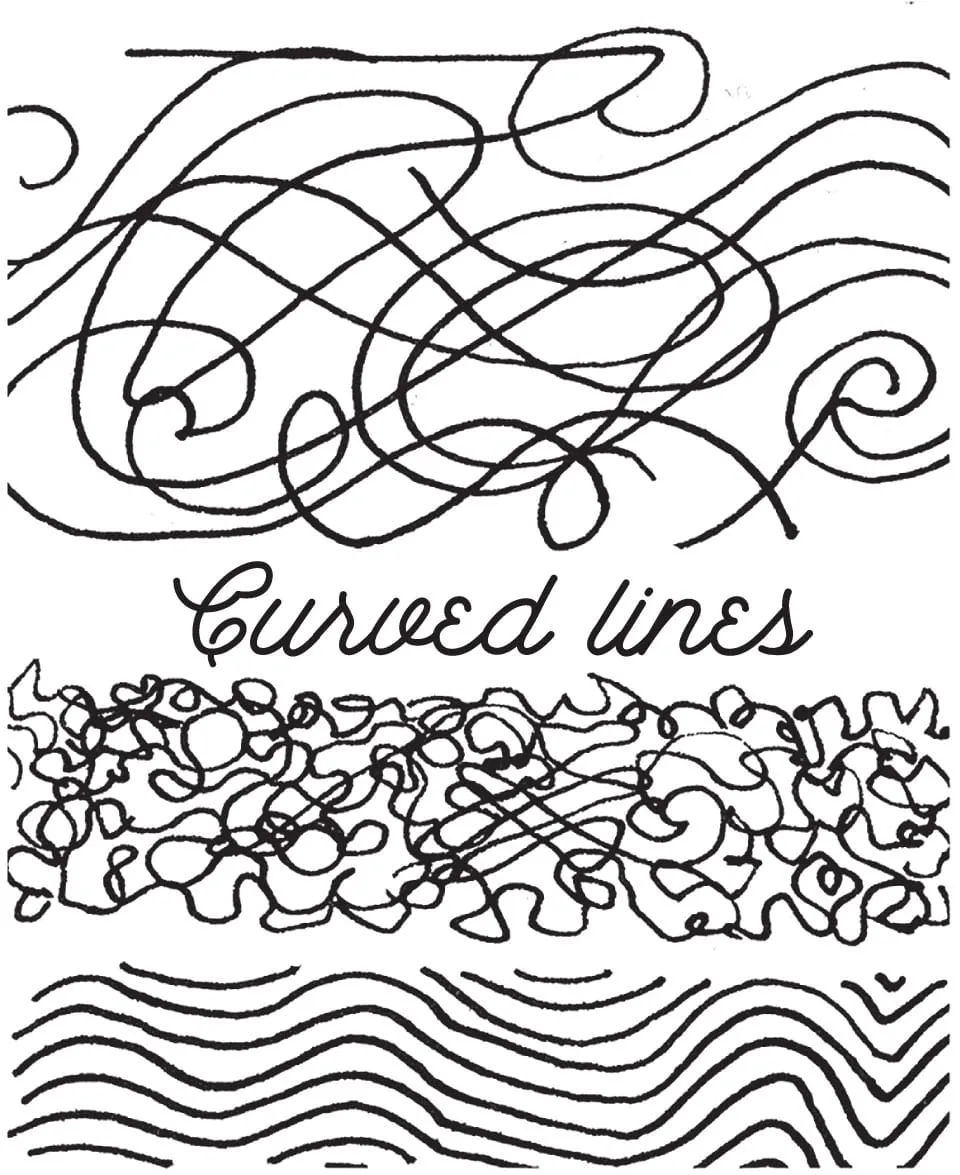
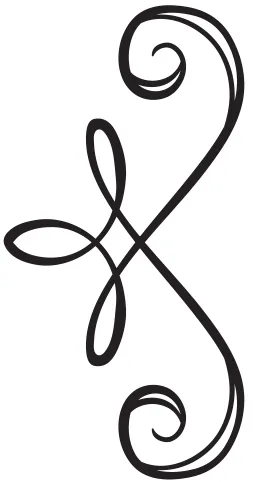
USE CURVED LINES TO SUGGEST FORM, CREATING THE ILLUSION OF THREE-DIMENSIONALITY.
THICK VS. THIN LINES
Another way to change how your line communicates is by adjusting its weight, or its thickness or thinness. Thickening a line makes it seem heavier and more imposing. Thinning a line communicates delicacy and lightness.
By varying the weight of a single line, you can make parts of that line stand out or appear darker in some areas, creating the illusion of three-dimensionality.
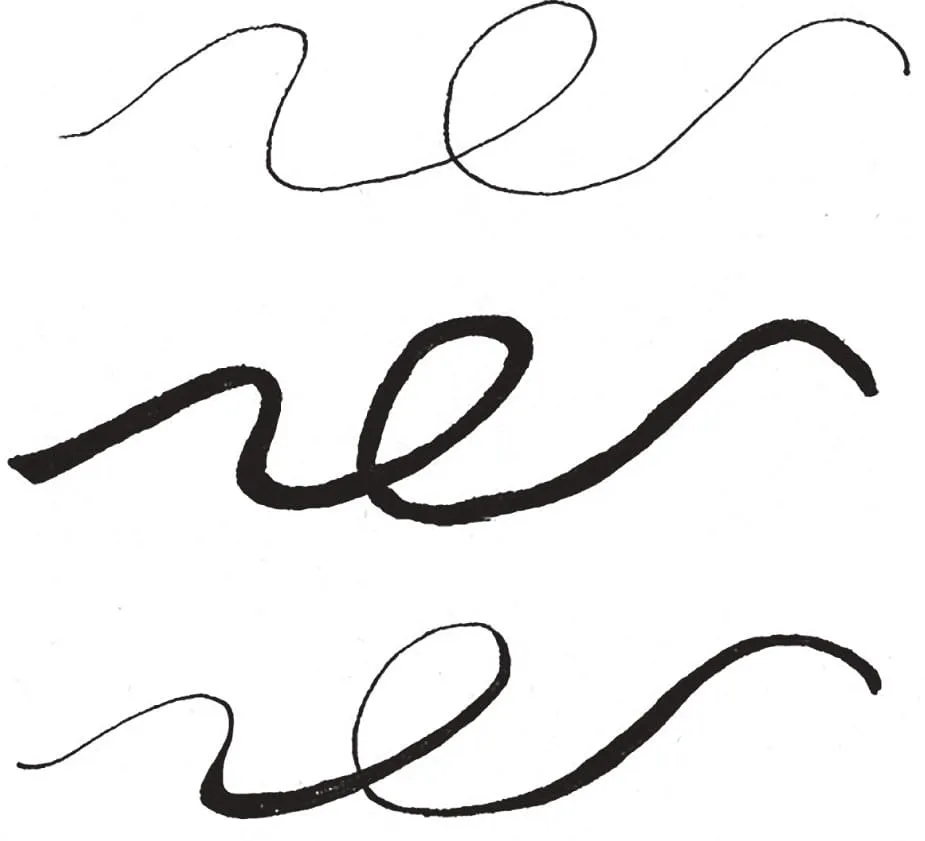
ADD VARIETY
You can change the quality of your line by varying its length and repetition. Long, continuous lines feel visually smooth, while short, choppy lines look rougher.

HATCHED LINES
Repeatedly using straight lines in a drawing is called “hatching.” Crosshatching means repeatedly layering straight lines in different directions. We’ll go into more detail about this when we talk about texture (shown here) and value (shown here).
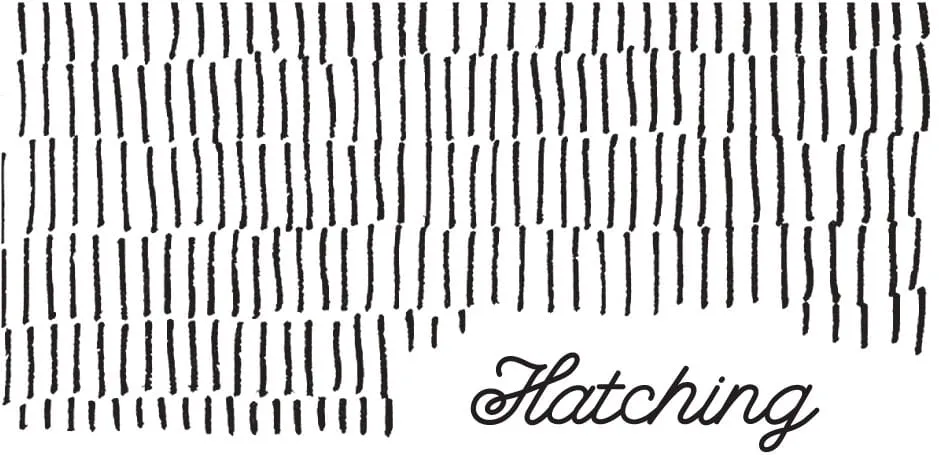
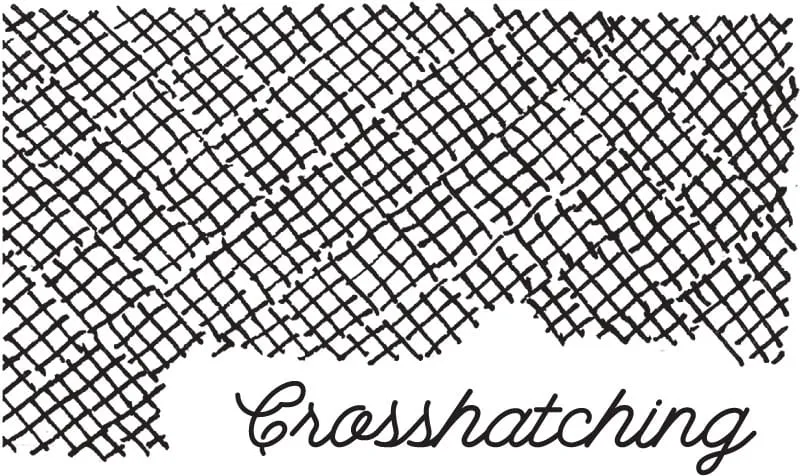
IMPLIED LINES
You can also form a line without drawing it at all. This is called “implied line” and requires using the negative space in a drawing to make it seem like there is a line. Another way to imply a line is by almost-but-not-quite connecting two separate lines. In both cases, your eye makes sense of the negative space by creating a line where there’s nothing.
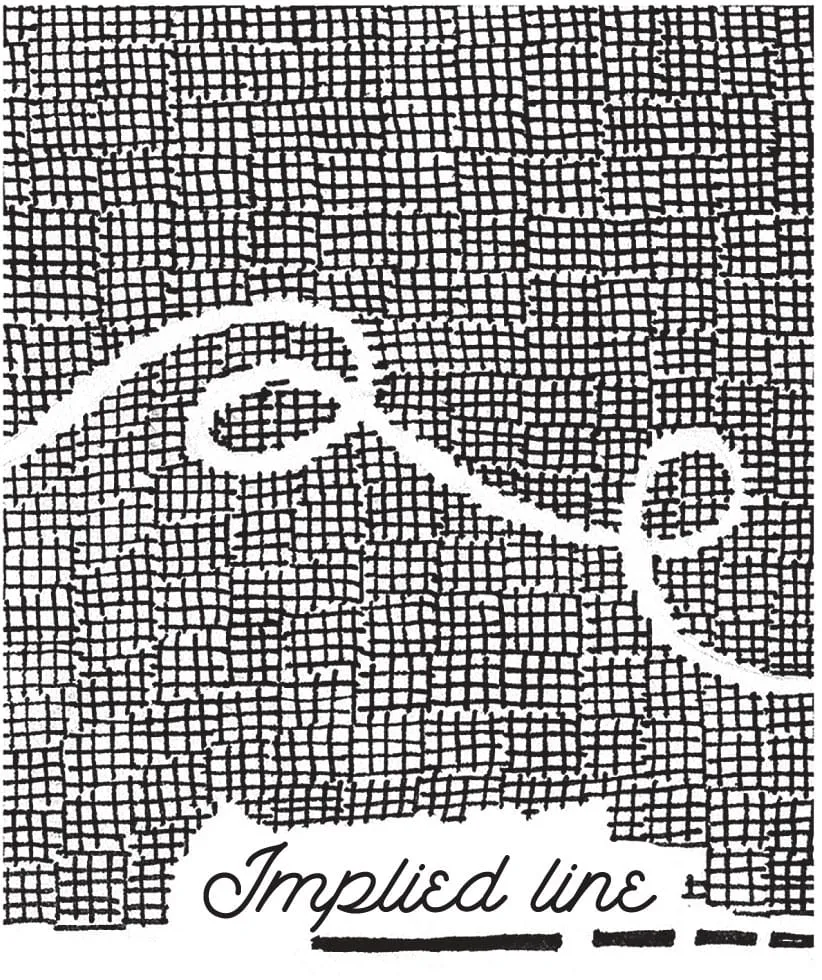
CONTOUR LINE
A contour line delineates the visual edge of an object. It’s very possible that you’re already using contour line to draw! Any time you draw the outline of an object, you use contour line.
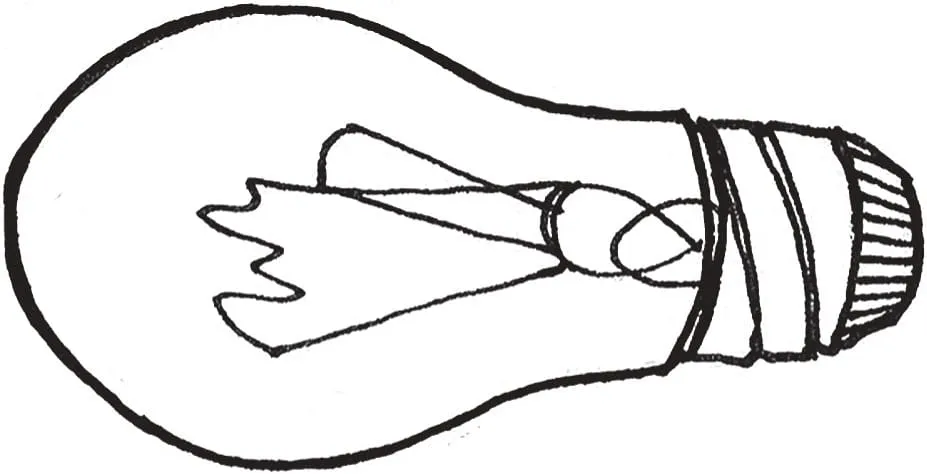
Take a close look at this drawing. Do you see any of the types of lines we just discussed?

Exercise: Contour Drawing
Let’s p...
Table of contents
- Cover
- Title Page
- Contents
- Introduction
- Getting Started
- Basic Techniques
- Mastering What you've Learned
- What's Next?
- About the Artist
- Copyright